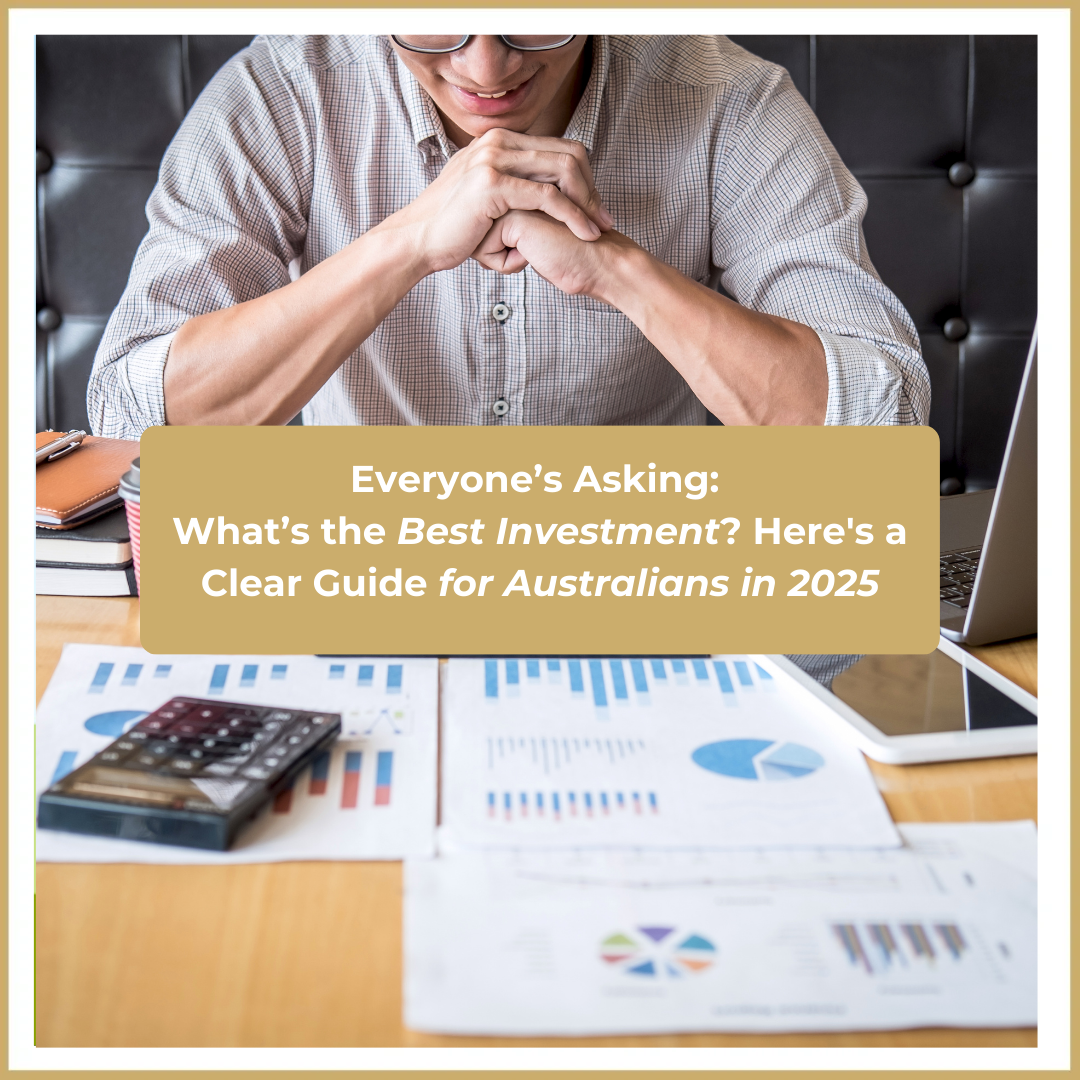Feeling Stuck on Where to Invest? You’re Not Alone
With rising living costs, changing interest rates, and more “money hacks” online than you can count, deciding where to invest your hard-earned cash can feel overwhelming. But here’s the truth: the best investment for you depends on your goals, your timeline, and your comfort with risk.
In this guide, we break down the main investment types accessible to Australians, what makes them different, and what to watch out for—so you can make smarter, more confident decisions.
1. Shares (Also Called Stocks or Equities)
What they are:
When you buy a share, you’re buying a piece of a company. If the company performs well, the share price goes up. You can also earn dividends—regular payments from profits.
Where to invest:
Australian shares (via the ASX), or international markets via brokers like Stake, Pearler, or SelfWealth.
Pros:
- Long-term growth potential (historical returns of 7–10% p.a. over decades)
- Liquid—you can sell quickly if needed
- Fractional investing now makes it easier than ever to get started
Cons:
- Highly volatile in the short term
- Requires research, or trust in fund managers
- Emotional investing (panic-selling) can hurt long-term returns
Real-world insight:
In the 2020 COVID dip, many portfolios dropped 30–40%. But those who stayed invested saw full recoveries within 12–18 months.
Best for:
Long-term investors looking for growth, and comfortable riding out the ups and downs.
2. Exchange-Traded Funds (ETFs) & Managed Funds
What they are:
ETFs bundle dozens—or even hundreds—of stocks into one product. Managed funds do the same but are often actively managed. These tools give you instant diversification.
ETFs vs. Managed Funds:
- ETFs are typically passive and lower-cost
- Managed funds are usually active and higher-fee, with a fund manager picking stocks
Pros:
- Diversification reduces risk
- Easy access to global markets (think Nasdaq, S&P 500, emerging markets)
- Some ETFs pay out quarterly dividends
Cons:
- Still subject to market volatility
- Passive ETFs don’t try to “beat” the market—just mirror it
- Fees on some managed funds can eat into returns
Best for:
Beginner investors, those with smaller budgets, and people who prefer set-and-forget strategies.
3. Property Investment
What it is:
Owning real estate, either residential (e.g. rental property) or commercial, to generate income and capital growth.
Direct property:
- Buy a house/unit and rent it out
- Borrowing (leverage) amplifies returns—but also risk
Indirect property:
- Invest via REITs (real estate investment trusts) or property ETFs
Pros:
- Tangible asset that historically grows over time
- Rental income can cover your loan or supplement income
- Tax benefits (negative gearing, depreciation)
Cons:
- Huge upfront costs (deposits, stamp duty, legal fees)
- Illiquid—selling takes time
- Market is sensitive to interest rate movements
Best for:
Mid- to long-term investors who can afford the entry costs and are happy managing or holding a physical asset.
4. Superannuation
What it is:
Your super is essentially your future income in retirement, and one of the most powerful long-term investment vehicles—thanks to compounding and low tax rates.
Pros:
- Tax on contributions (15%) and earnings is lower than your income tax rate
- Government contributions and co-contributions available for low to middle-income earners
- Compounds quietly in the background for 30+ years
Cons:
- Locked until retirement (with few exceptions)
- You may not know where it’s invested unless you check
Smart move:
Review your fund’s default investment option—many Aussies are in “balanced” or “conservative” portfolios, which may not suit your goals.
Best for:
Everyone—especially if you’re not actively investing outside of super.
5. Term Deposits and High-Interest Savings Accounts
What they are:
A savings product offered by banks where you lock in your money for a fixed term and earn a guaranteed interest rate.
Pros:
- Very low risk (government guaranteed up to $250k per bank)
- Predictable return
- Good for short-term saving goals
Cons:
- Often lower than inflation—money loses purchasing power
- Locked in during the term (early withdrawal = penalty)
Best for:
Risk-averse investors, or those saving for a short-term goal (e.g. a home deposit in the next 1–2 years).
6. Bonds
What they are:
When you buy a bond, you’re lending money to a company or government in exchange for regular interest payments and your capital back at maturity.
Pros:
- Lower volatility than shares
- Reliable income stream
- Good for risk-averse portfolios
Cons:
- Returns generally lower than shares
- Bond prices can drop if interest rates rise
- Harder for everyday investors to access directly
Tip:
Bond ETFs can be a more accessible entry point than direct bond buying.
Best for:
Balanced or conservative investors, or anyone looking to reduce volatility.

Which Investment Is Right for You?
There’s no “one-size-fits-all” answer. But here’s a quick framework:
| Goal | Timeframe | Suitable Investments |
| Building long-term wealth | 7+ years | Shares, ETFs, Super, Property |
| Generating income | 3–7 years | Property, Bonds, High-dividend ETFs |
| Saving for something soon | <2 years | Term deposits, savings accounts |
| Reducing volatility | Anytime | Bonds, diversified funds, cash buffer |
Why It Pays to Get Personal Advice
Investing is exciting—but also complex. Knowing which mix of investments suits you requires more than Googling “best ETF 2025”.
A licensed financial adviser can help you:
- Match your investments to your life goals
- Identify tax-smart strategies (especially around super and property)
- Build a plan that balances risk, return, and peace of mind
- Avoid emotional or short-sighted decisions that can cost you
🎯 Think of a financial adviser like a personal trainer for your money—they help you stay disciplined, consistent, and focused on the long game.

Final Thought: Start Smart, Stay Consistent
The hardest part of investing is starting. The second hardest? Sticking with it through the ups and downs. But with the right knowledge and guidance, you can turn your money into a tool that serves your life—not the other way around.
🧰 Tools & Resources
Thinking about investing but not sure where to begin?
Book a call with a financial adviser and build an investment strategy that works for you. Now is always the best time to start.
Any discussion in this article does not take into account your objectives, financial situation or needs. Before acting on it, you should consider whether it’s appropriate to you, in light of your objectives, financial situation or needs.

